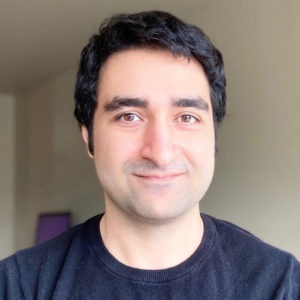Foster PhD Alumni Spotlight: Omid Rafieian, PhD ’20
Collectively, the marketing department at Foster has shaped the future of the field of marketing by training the next generation of top scholars. Recent job placements include Kellogg School of Management, Cornell Tech, and University of Miami, and Indiana University. The quality of job placements reflect the training that prepares UW Foster graduates to push boundaries of knowledge and thrive as valued members of learning communities.
Students in the Foster PhD program get early mentorship from leading scholars in the field. In addition to personalized guidance from a faculty mentor, Foster students have access to leaders in related disciplines such as UW’s prestigious computer science and psychology programs. Rigorous coursework and a supportive learning environment serve as a foundation from which students can launch productive careers.
Today’s spotlight is on Omid Rafieian, PhD ’20, an assistant professor at Cornell Tech whose research focuses on digital marketing and marketplace design.
 Tell us about your research.
Tell us about your research.
My research broadly relates to digital marketing and marketplace design – how the design of digital marketplaces can shape consumer behavior, and how firms can combine their theoretical understanding of markets with massive amounts of data to make better decisions. More specifically, in the research that I’ve done throughout my Ph.D., I use large-scale data from a mobile in-app advertising platform to examine how the platforms can optimally sell their advertising spaces in real-time. Like most market design problems, answering this question requires a multi-method approach as the marketplace consists of players with different incentives. As such, on the consumer side, I utilize more recent methods in machine learning and econometrics to learn user engagement with ads and personalize ad delivery for each user. On the advertiser side, I need to use more established theoretical frameworks in auction theory to make sure that the platform can actually sell personalized ad delivery at an optimal price. Together, it allows advertising platforms to achieve better market outcomes.
How did you get interested in this research topic?
I did my undergraduate studies in applied mathematics, and as part of this program, I had to take classes from economics. I took a doctoral-level class in auction theory and simply loved this area in how it combines deep mathematical concepts with real-world applied problems. I always wanted to work in this area, and this was probably one of the main reasons I decided to switch from mathematics to marketing. However, one of the main challenges in the area of auction theory is that it is quite well-established with earlier work in the 80s and 90s by phenomenal scholars, many of whom won the Nobel Prize in Economics. So firms almost know what they should do, and it is hard to find areas upon which you could improve the current practice.
The gap I found in the current practice actually originates from a paper that I wrote with my advisor Hema Yoganarasimhan in my third year of Ph.D. In that paper, we focused on the sequential aspect of ad placement in mobile ads and found that users are more engaged with an ad if the variety of previous ads that they have seen is higher. I realized that the current practice in digital advertising simply ignores the dynamics of ad allocation. That is, for any advertising space, the platform runs an auction that selects the ad with maximum expected revenue at that moment, but ignores how this decision may affect the revenue from future ad placement opportunities. However, my earlier paper showed that there is a spillover from the sequence of prior ads. So it must be profitable for firms to adopt a forward-looking approach while allocating ads. I figured out that if the platform wants to incorporate a forward-looking approach, they have to change the current auction format because it only works for static settings. So I started reading the literature on dynamic auction design to see how I can extend the current auction formats in mobile advertising to the cases where the platform has a forward-looking approach in allocating ads, and this is how this project started.
How did the PhD program at Foster prepare you for success?
Given my area of study, I think I was very lucky to be in the marketing Ph.D. program at UW Foster. I was very fortunate to work under the supervision of Hema Yoganarasimhan, whose breadth of knowledge is exemplary in our field. I learned a lot from her in our two joint research projects and benefited immensely from her constant guidance throughout my Ph.D. Besides, our marketing group is unique in having some of the best scholars in the area of digital marketing and advertising, and I had the opportunity to receive constructive feedback from them. The Ph.D. coursework in marketing was very diverse, which helped me view research questions from different angles.
Moreover, my research greatly benefited from interacting with the CS department and taking classes in machine learning with researchers who extensively contributed to this field. Being in Seattle also provided me with the opportunity to talk to people in big tech companies like Microsoft and Amazon and update my knowledge on state-of-the-art practice in the industry.
What was your favorite moment in the PhD program?
This is a tough question, and I don’t know if I could pick one favorite moment. But my favorite period of time certainly was when I was preparing for the job interviews in the summer of my fourth year. I received an enormous amount of support from my advisor that helped me work hard and enjoy every part of that process. I will always be indebted to her for that.
